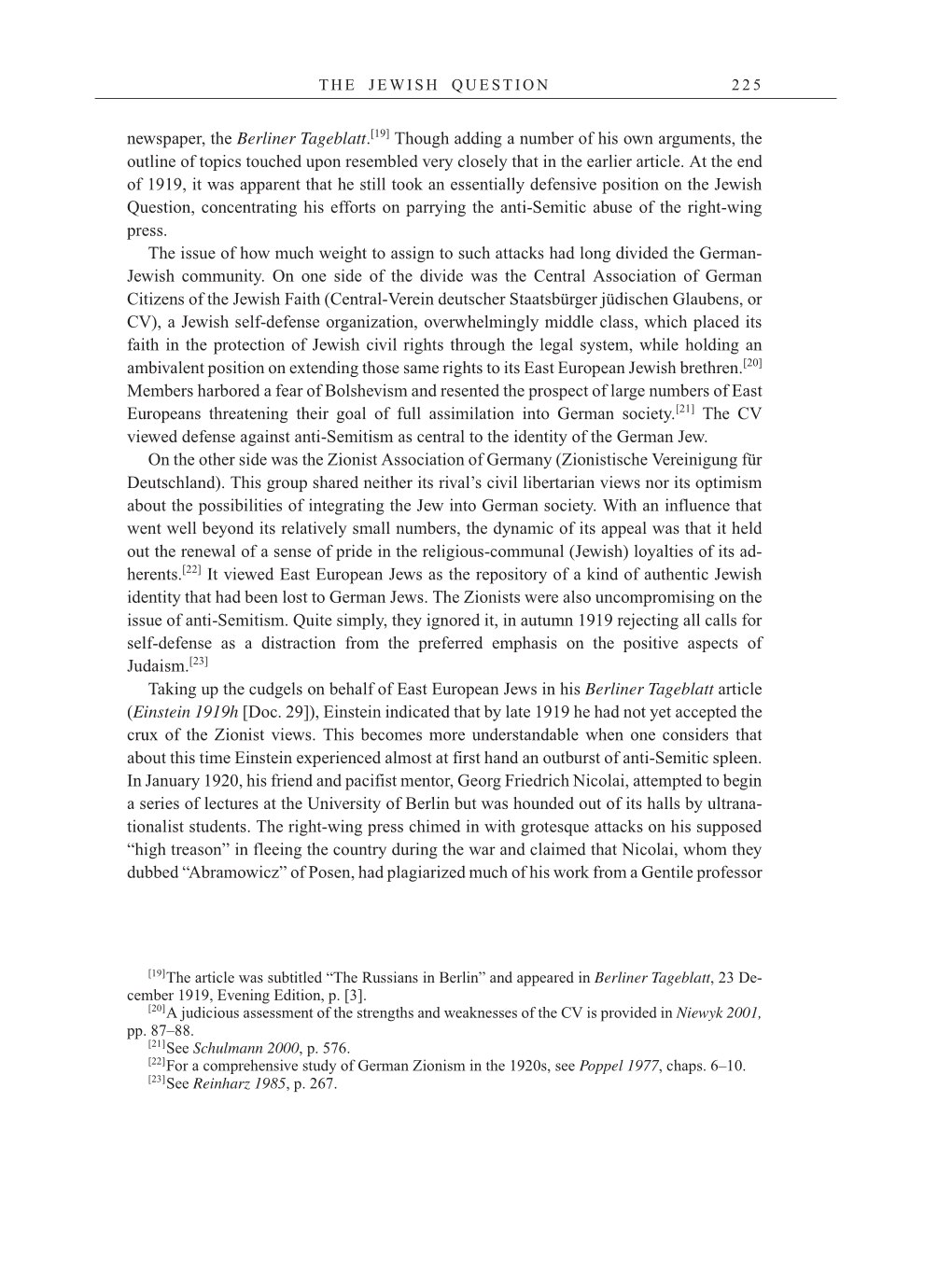T H E J E W I S H QU E S T I O N 2 2 5
newspaper, the Berliner
Tageblatt.[19]
Though adding a number of his own arguments, the
outline of topics touched upon resembled very closely that in the earlier article. At the end
of 1919, it was apparent that he still took an essentially defensive position on the Jewish
Question, concentrating his efforts on parrying the anti-Semitic abuse of the right-wing
press.
The issue of how much weight to assign to such attacks had long divided the German-
Jewish community. On one side of the divide was the Central Association of German
Citizens of the Jewish Faith (Central-Verein deutscher Staatsbürger jüdischen Glaubens, or
CV), a Jewish self-defense organization, overwhelmingly middle class, which placed its
faith in the protection of Jewish civil rights through the legal system, while holding an
ambivalent position on extending those same rights to its East European Jewish
brethren.[20]
Members harbored a fear of Bolshevism and resented the prospect of large numbers of East
Europeans threatening their goal of full assimilation into German
society.[21]
The CV
viewed defense against anti-Semitism as central to the identity of the German Jew.
On the other side was the Zionist Association of Germany (Zionistische Vereinigung für
Deutschland). This group shared neither its rival’s civil libertarian views nor its optimism
about the possibilities of integrating the Jew into German society. With an influence that
went well beyond its relatively small numbers, the dynamic of its appeal was that it held
out the renewal of a sense of pride in the religious-communal (Jewish) loyalties of its ad-
herents.[22]
It viewed East European Jews as the repository of a kind of authentic Jewish
identity that had been lost to German Jews. The Zionists were also uncompromising on the
issue of anti-Semitism. Quite simply, they ignored it, in autumn 1919 rejecting all calls for
self-defense as a distraction from the preferred emphasis on the positive aspects of
Judaism.[23]
Taking up the cudgels on behalf of East European Jews in his Berliner Tageblatt article
(Einstein 1919h [Doc. 29]), Einstein indicated that by late 1919 he had not yet accepted the
crux of the Zionist views. This becomes more understandable when one considers that
about this time Einstein experienced almost at first hand an outburst of anti-Semitic spleen.
In January 1920, his friend and pacifist mentor, Georg Friedrich Nicolai, attempted to begin
a series of lectures at the University of Berlin but was hounded out of its halls by ultrana-
tionalist students. The right-wing press chimed in with grotesque attacks on his supposed
“high treason” in fleeing the country during the war and claimed that Nicolai, whom they
dubbed “Abramowicz” of Posen, had plagiarized much of his work from a Gentile professor
[19]The article was subtitled “The Russians in Berlin” and appeared in Berliner Tageblatt, 23 De-
cember 1919, Evening Edition, p. [3].
[20]A judicious assessment of the strengths and weaknesses of the CV is provided in Niewyk 2001,
pp. 87–88.
[21]See Schulmann 2000, p. 576.
[22]For a comprehensive study of German Zionism in the 1920s, see Poppel 1977, chaps. 6–10.
[23]See Reinharz 1985, p. 267.
